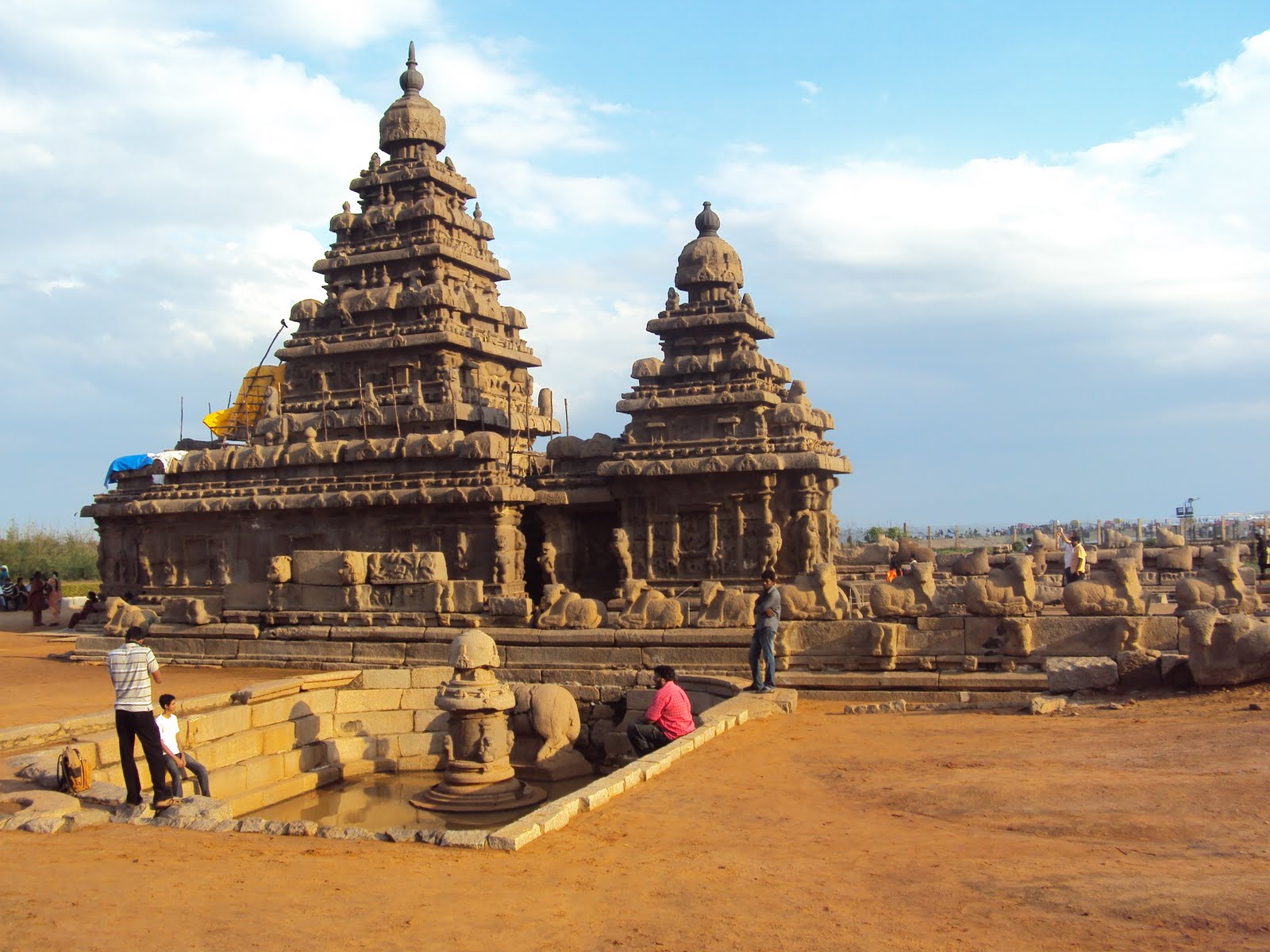Mahabalipuram temple

Mahabalipuram the ancient capital and sea port of Pallava Kings is known for its south Indian Temple architecture.However nowadays it is a sleepy village living on its past glory and the tourist traffic.
Introducation
Mahabalipuram (also called Mamallapuram) is a beautiful temple town situated along the shores of the Bay of Bengal about 60 kms from the South Indian town of Chennai. Mahabalipuram was the capital of the Pallava Kings around the seventh and eighth centuries. The Pallavas were master sculptors. The town boasts of some of the finest rock cut caves and sculptures in the world. The Shore temples of Mahabalipuram are an architectural wonder. The sculptures here are intended around 600 to 750 AD. The rock-cut monuments of Mahabalipuram fit in with the earliest phase of the Dravidian temple architecture. The sculptures at Shore temples or Rathas of Mahabalipuram are breathtakingly real. Among the nine cave temples, the Krishna cave is notable because of its realistic Portrayal.
Location
Mahabalipuram is situated close to Chennai of Tamil Nadu on the shores of the Bay of Bengal, along the eastern coast of South India. The shore temples at Mahabalipuram are known as as seven pagodas, among which six are submerged in the sea and only one has survived from the ravages of nature.
History of Mahabalipuram
Mahabalipuram is one of history’s intriguing enigmas. The ancient Mamallapuram, as Mahabalipuram was formerly known, was flourishing port town of the Pallava rulers of south India who chiseled in stone a wonderful “open-air museum” of sculpture under the vault of the burning sky. Aside from this, nothing is known of the place. That which was the purpose behind this complete exercise, and, more important, why all the royal patronage this place enjoyed suddenly disappeared, no one actually has any answer.
Professionals state that there were seven pagodas or temples on the shores of Mahabalipuram. Basically one were pillaged by the rapacious sea, though there is little change underwater evidence to substantiate their existence.
The majority of the temples and rock carvings of the place were built during the reigns of Narsinha Varman I (AD 630-668) and Narsinha Varman II (AD 700-728). Though the initial kings of Pallava dynasty were followers of Jainism, the conversion of Mahendra Varman (AD 600-630) to Shaivism led the majority of the monuments to be related to Shiva or Vishnu.
good post
thank you